Most birders I know have a weakness for woodpeckers. It’s partly the drumming that seduces us: that monotone hammering woodpeckers make every spring to claim a territory and find a mate. But it’s also their shape and color. Shape because every part of a woodpecker’s anatomy—bill, skull, ribcage, tail feathers, and feet—has been adapted to its peculiar foraging techniques on the trunks of trees.
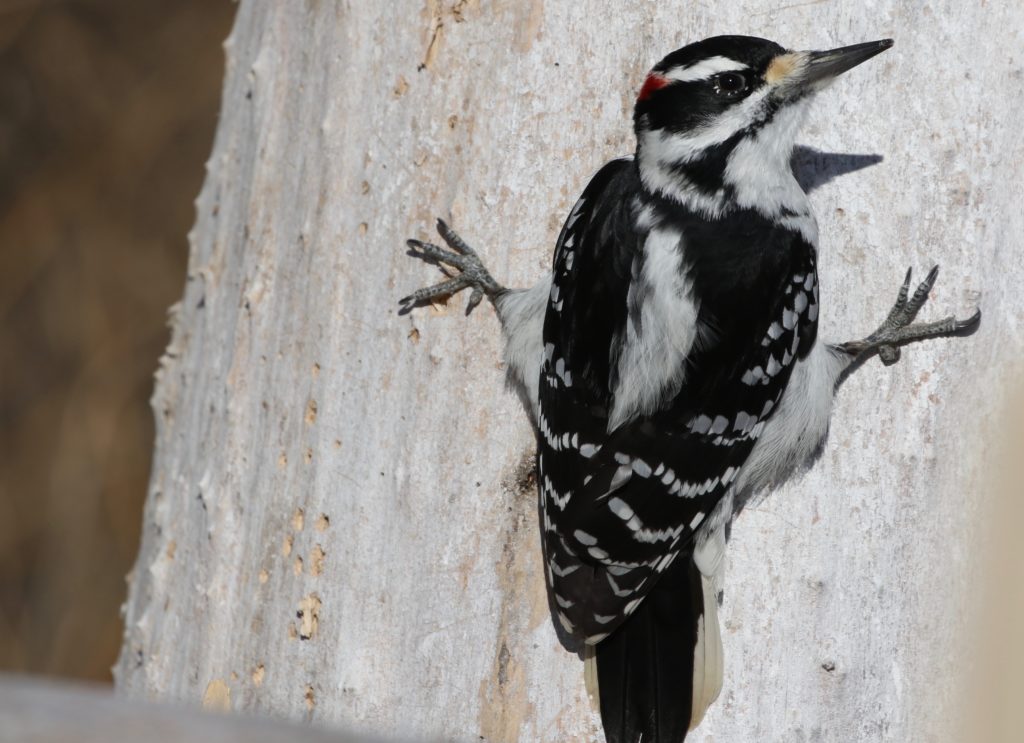
Color because most North American woodpeckers are something like the Tuxedo Cat of the avian world, clothed in a simple but striking arrangement of black-and-white plumage, often with a Scarlet Pimpernel dash of red somewhere on the head.
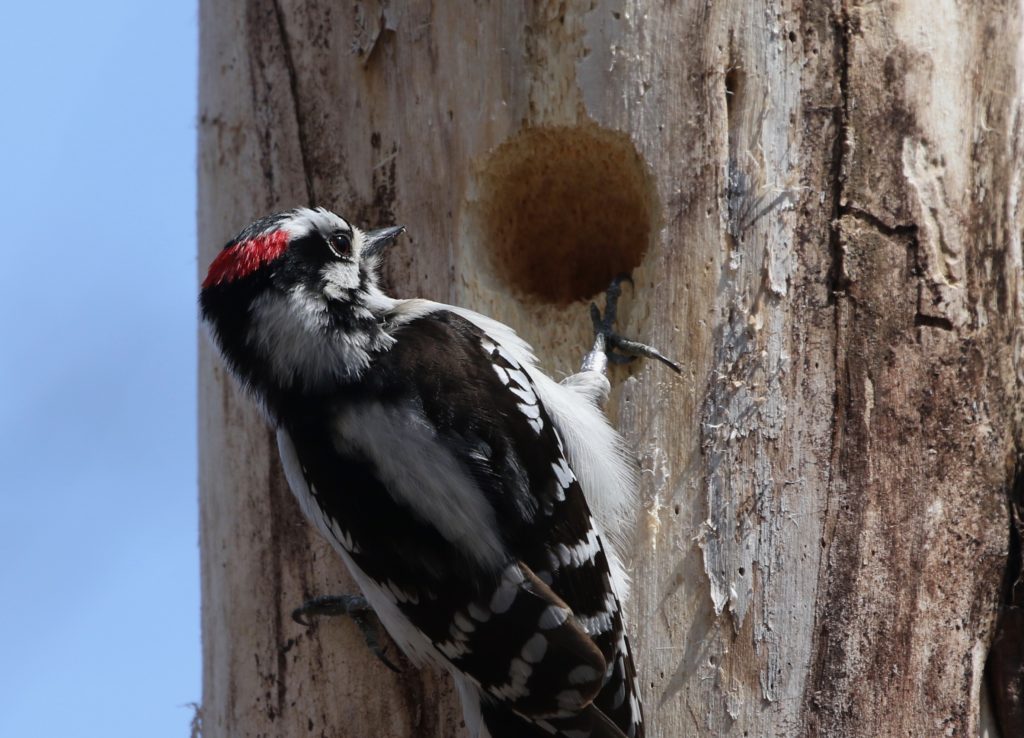
Another reason to like woodpeckers is that they’re common enough to fill in for our target species on slow birding days. When I can’t find the owl or hawk or thrush I’m looking for, sooner or later I’ll hear that irregular, intermittent tapping sound a woodpecker makes while exploring a tree trunk for bugs and grubs. Then I’ll see the bird itself hitching up the trunk, so intent on what it’s doing that it’s oblivious of me. “Come closer,” it seems to say. “Come right over here and take as many photos as you like.”
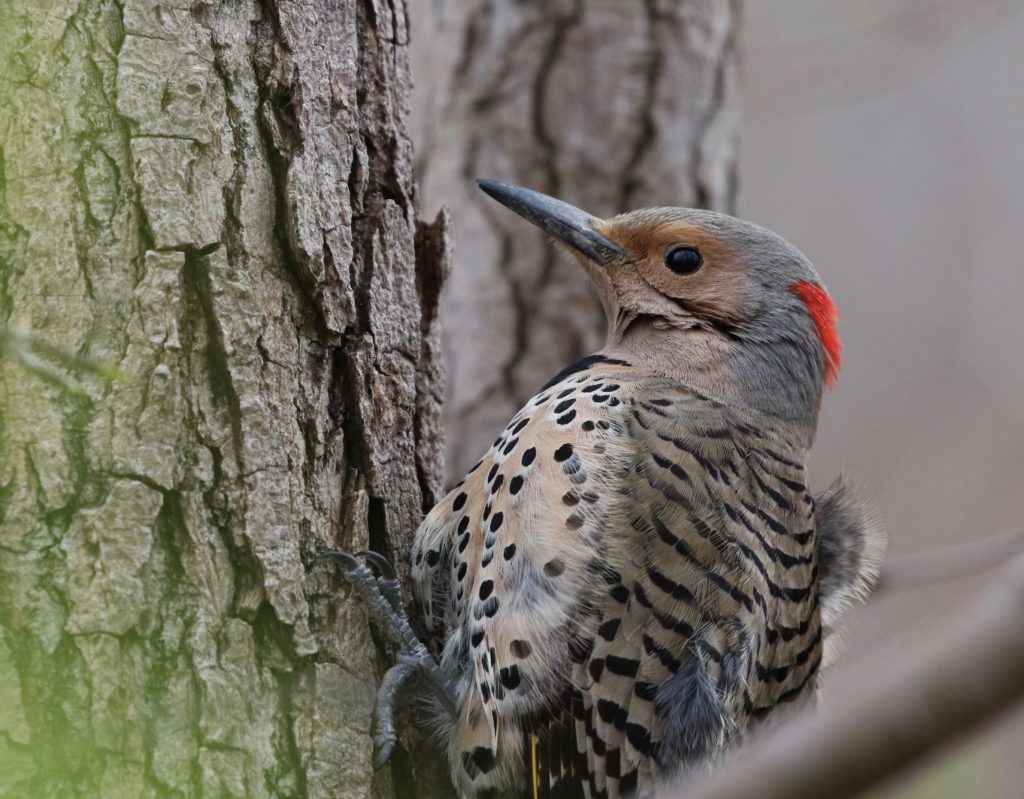
This happened just the other day, when I was looking for a Barred Owl that had been spotted on the Leslie Street Spit in Toronto. I searched the woods where the owl was seen, but the bird had flown.
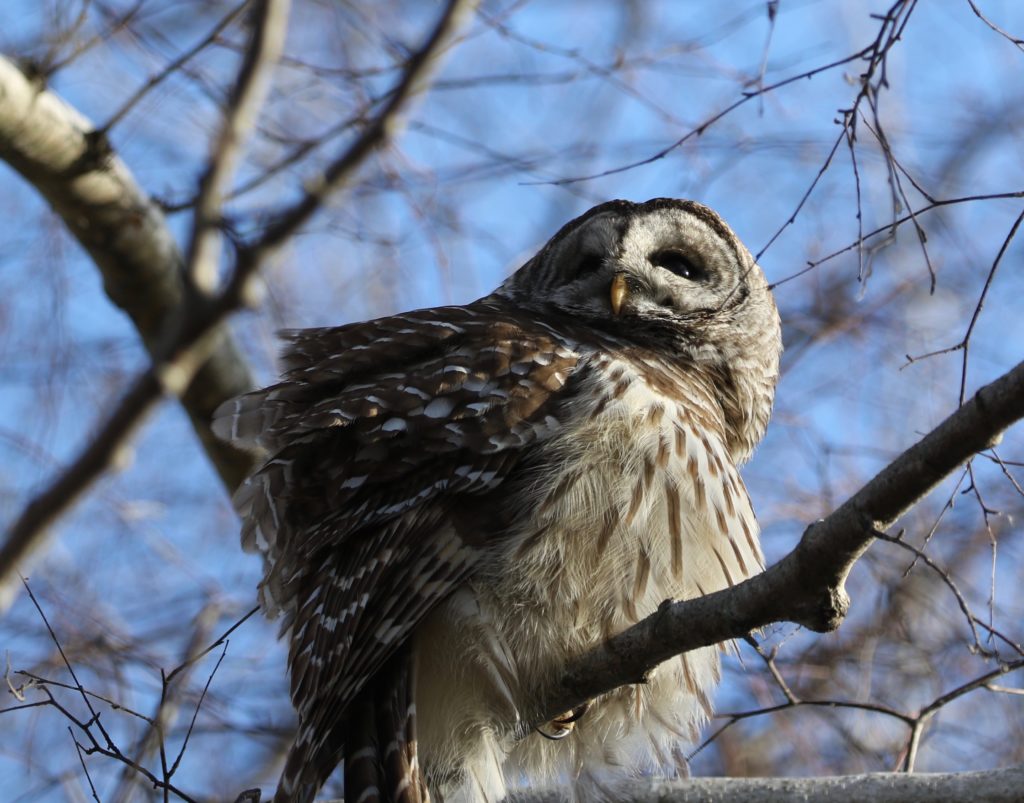
I’d just turned to leave when I heard the tapping. Not three meters from where I stood, a female Hairy Woodpecker was busy peeling bark off a dead tree. Operating on the if-life-gives-you-lemons principle, I started snapping photos. My camera is fairly noisy, especially in burst mode, but the click-and-snap didn’t seem to faze the woodpecker.
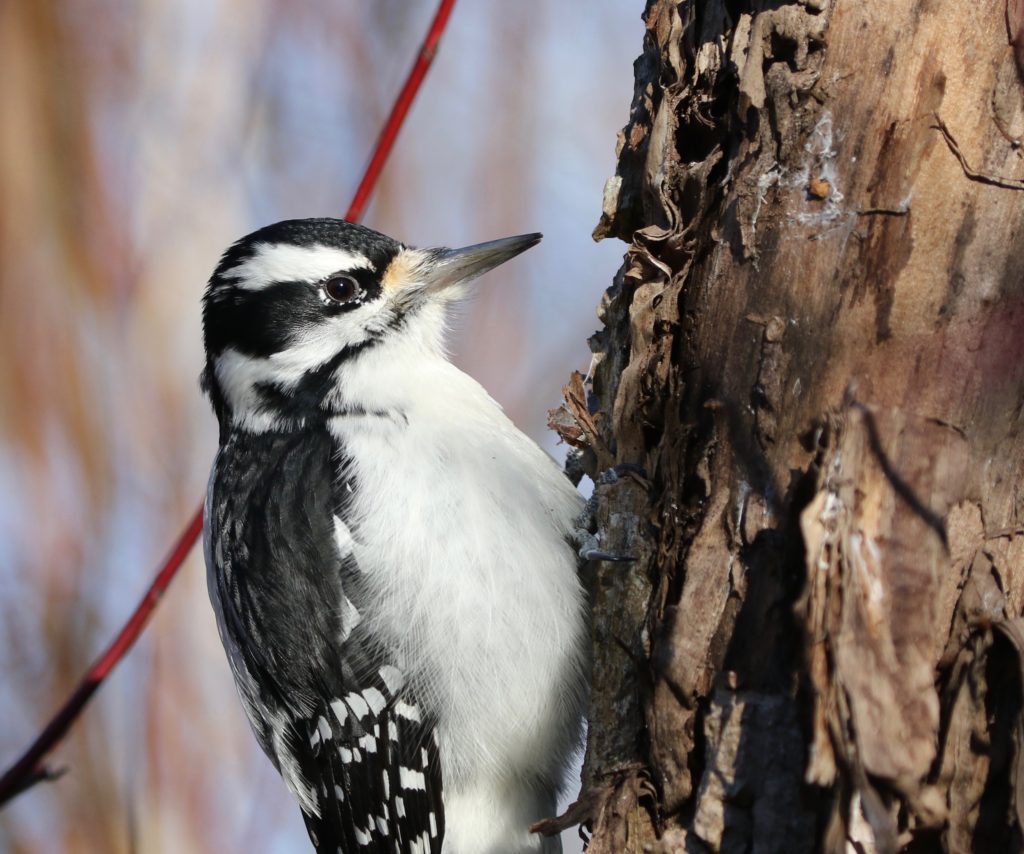
One advantage to shooting in bursts was that it provided sequences of shots that helped me to understand exactly how the woodpecker accomplished its task of finding something to eat under the bark of the tree. First, as in the photo above, came the straight-on, wide-eyed look at the target area. Next, the bird gave the tree a hard rap with its bill to displace the bark and drill into the trunk. Every time it did this, the woodpecker closed its eyes to protect them from flying woodchips.
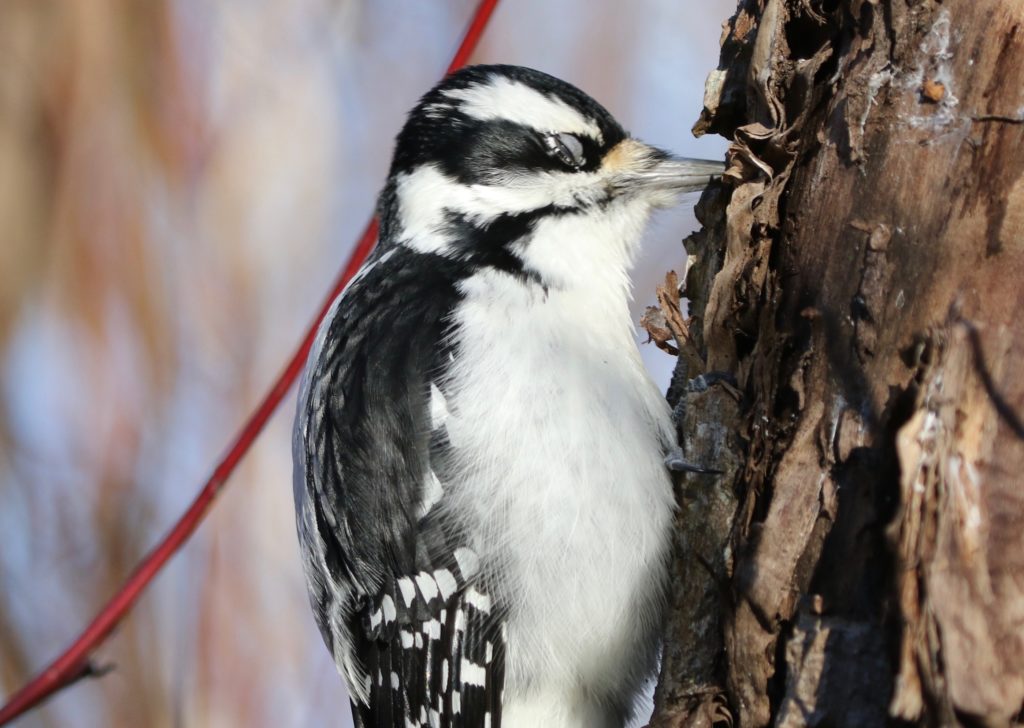
Finally, the woodpecker would rear back with its eyes open again and the prey—in this case a spider—in its bill.
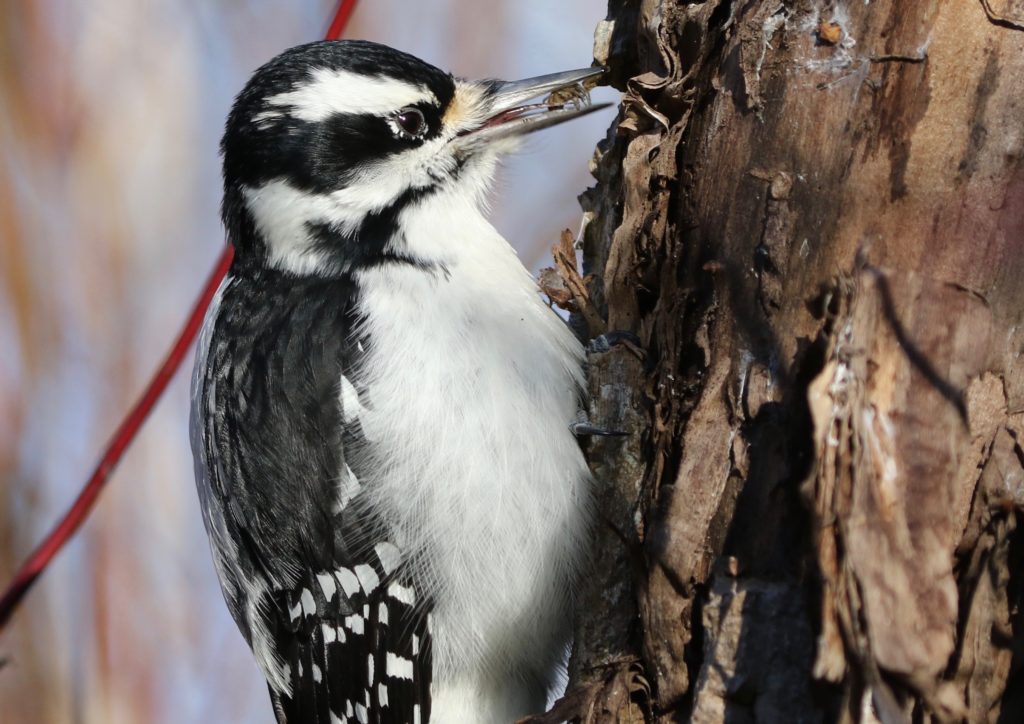
Sometimes, the woodpecker’s tapping would uncover the cocoon of a butterfly or moth, which the bird would pull apart to expose the larva it contained.
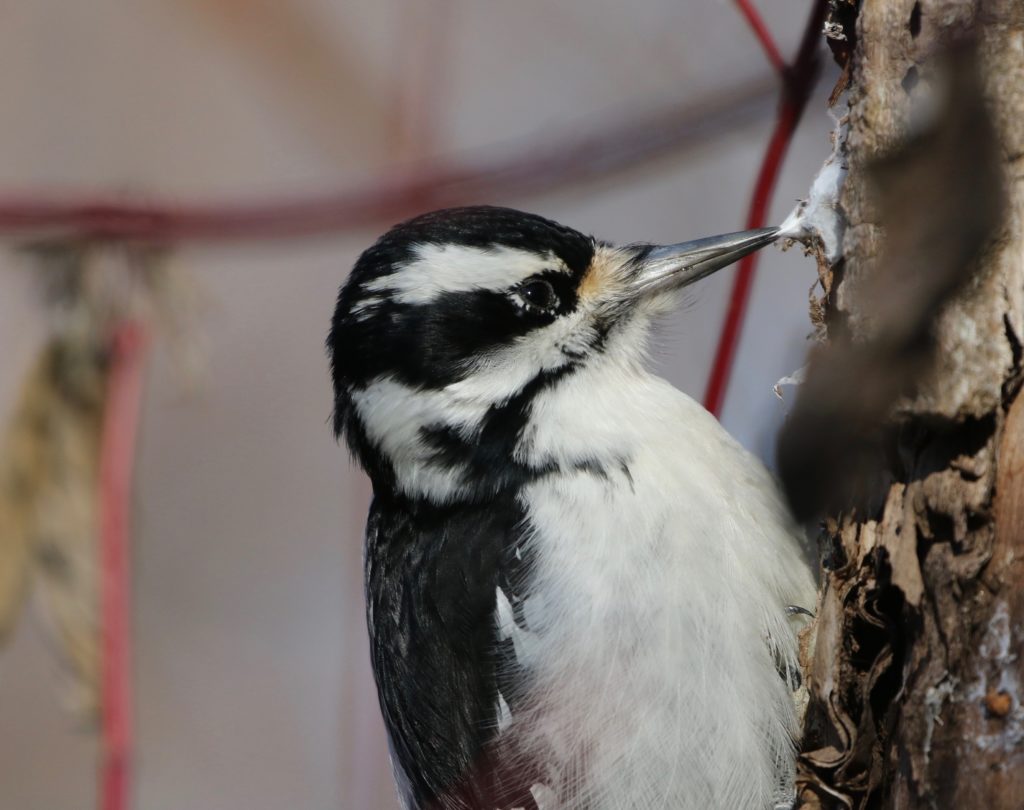
I spent about half an hour photographing this one woodpecker, and she never rested, never stopped her work of excavating dead tree trunks for things to eat. When I left, she was still working, and the sound of her tapping accompanied me on my way out of the woods.
The thought occurred that there aren’t any feeders in this particular park, so whatever the bird wants to eat, she has to find herself. Especially in the cold of winter, she must spend most of the day foraging just to get enough food to keep her warm.
To revise a phrase from Thoreau, what a revelation it would be “to think like a [bird] for a moment.” How would that change the way we viewed a forest? For one, it would annihilate any hint of boredom. It would do so by getting us to see the life, the nourishment, that exists even within those things that appear to be dead.
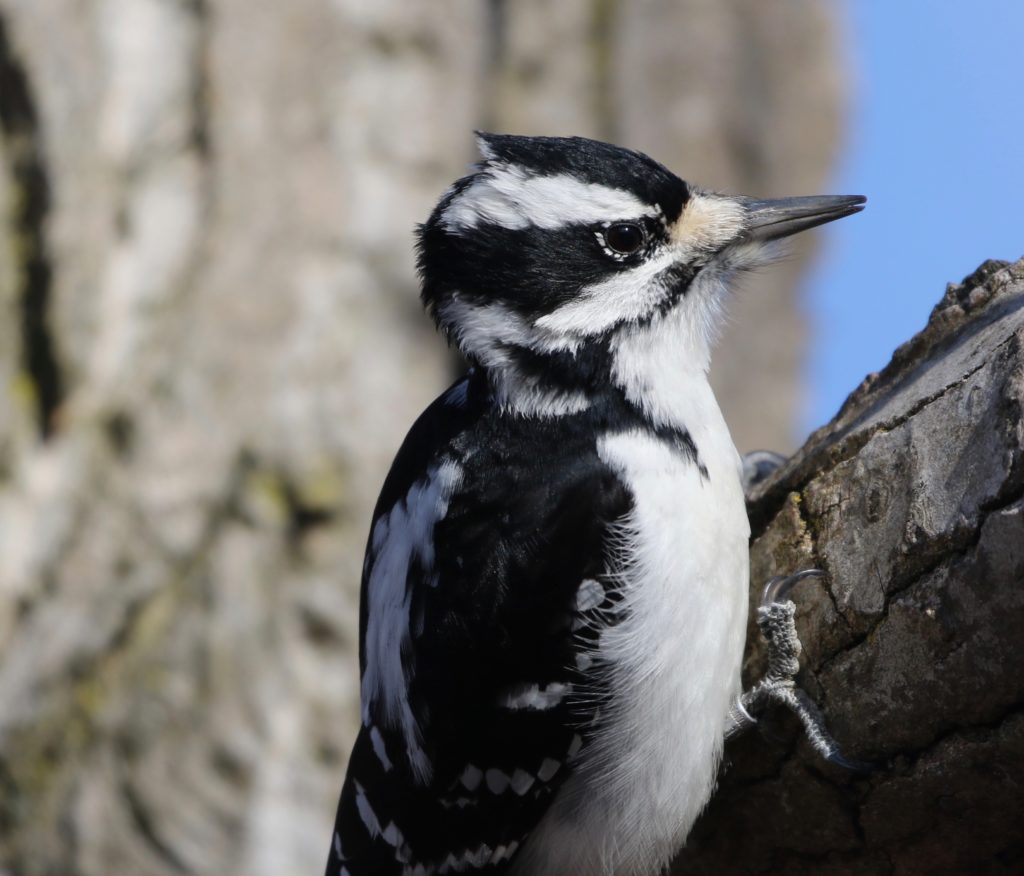
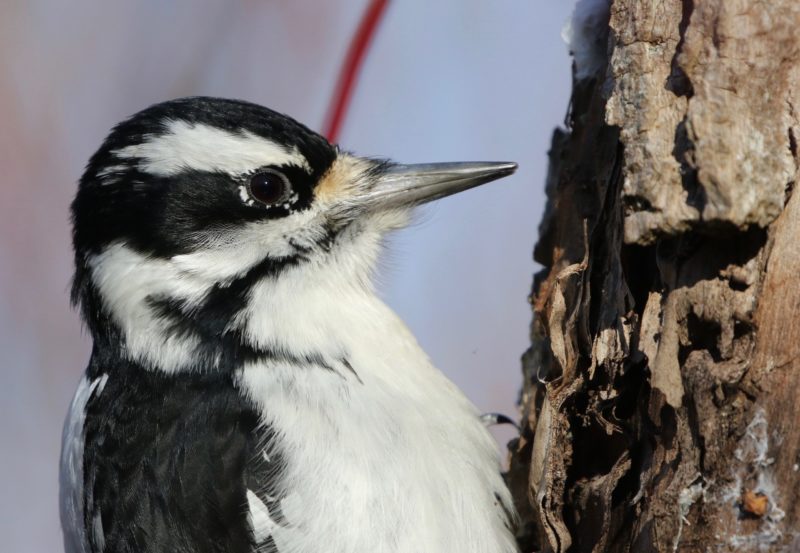
Really good Ed! I love the woodpeckers and we have quite a few near us in No. Florida. The most common are red bellied and pileated woodpeckers. Occasionally we’ll come across a red headed woodpecker. The drumming is the most interesting behavior for me. I suspect they’re continually scouting for and trying out new and better drums
Thanks, Chris. We get the Red-bellied here and a few–too few–of the Pileated, but we almost never see a Red-headed Woodpecker. And yes, the drumming is fascinating. I think you’re right–that they actually seek out the branches and trunks that resound the most.
What a delightful essay! I felt as if I was right there (the amazing photos helped with that), as the bird looked for her food. You’ve revealed what the life of a bird is like–filled with industry and necessity. So much to admire. Next time I see woodpeckers in the woods, I’ll try to get closer….
Thank you, Jeannette–I’m so glad you enjoyed the post.
Thank you , Ed. Your photos are wonderful and I really enjoyed your comments.
Hi Honor: Great to hear from you, and thanks very much for your comment. I’m very glad you enjoyed the photo essay.
Very nice post, again! I gasped audibly when I saw the spider in the beak. You’re getting your money’s worth out of your camera.
Thanks, Barry. And yes, the camera–a Canon 7D Mark II–is a real workhorse, but what really does the heavy lifting is the lens, a Canon EF 100-400 mm telephoto. A superb piece of glass.